Are you wanting an activity that will boost your 4th and 5th grade students’ vocabulary and morphology skills? Having a morphology word of the day routine is a great way to engage students and increase morphology and vocabulary skills. Read more about this morphology activity and grab free templates on this post.
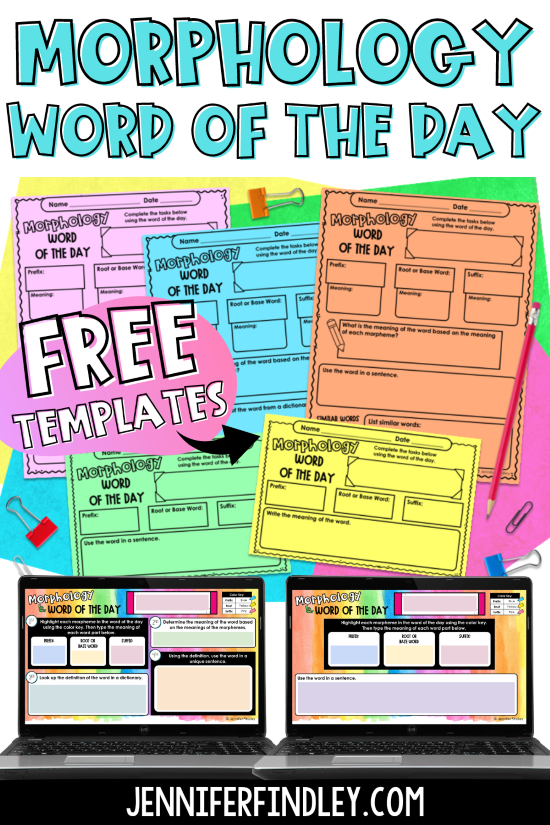
Morphology of the Day Routine
There are many ways to implement a daily or weekly morphology of the day routine. Here are some ideas:
1. Present students with a new word each day/week. Use grade-level roots and bases to expose students to higher-level vocabulary.

2. Have students collect multimorphemic words for analysis. They can choose a word from their list to analyze using one of the free templates (and then share with partners or small groups).

3. Give students a base or root and have them construct as many words as possible. Choose one word from their creations to use as the morphology word of the day/week.
4. Keep a running class list of multimorphemic words to analyze. Use words you find in read alouds, reading passages, and released state test samples. You could even organize and post the words using a morphology wall.
5. Use a ready-to-go resource with words and sentences (using the words in context to strengthen understanding). Click here to see a ready-to-go Morphology of the Day resources for grades 4-5.
Morphology of the Day Routine: Whole Group and Small Group
You can easily implement a morphology of the day routine whole group (with student discussion). Another option is to have this be a word work or literacy station. To do this in a center or station, simply post the words for students to analyze that day and give them directions or templates to record their work. Students could even be given a list of words to choose from.
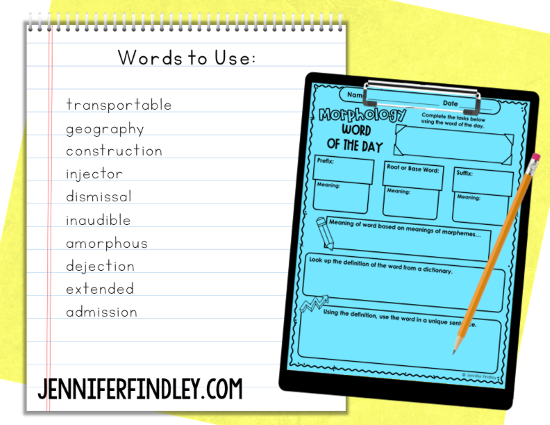
Morphology of the Day: Example Activities and Tasks
Here are some activities that you can do with a morphology word of the day/week:
1. Decompose the word into a word sum. Example: instruction → in + struct + ion. Identify the prefix, root/base, and suffix.
2. Challenge students to analyze the meaning of the word’s prefix, root, and base in order to understand the meaning of the word. Students can use a dictionary to confirm the meaning of the word or you can give them a sentence with the word used in context to help them confirm the meaning.
3. Have students generate a list of related words after you analyze the focus word. Related words could have the same prefix, root, base, or suffix.
4. Have students use the focus word of the day in unique sentences and share with partners or small groups. Post the sentences under the focus word.
5. Use the root or base of the word to springboard into a word matrix activity. Click here to read more about word matrix activities and grab free teaching posters.
6. Keep a running list of the words you analyze through a morphology word of the day routine. Encourage students to use the words in their writing and to look for related words as they read.
Benefits of Using a Morphology Word of the Day Activity
A Morphology Word of the Day activity is a great way to get students thinking about and analyzing the morphology of words.
- It offers systematic practice that helps them become more comfortable with analyzing words and comes with plenty of opportunity for discussion.
- It is a great way to build students’ confidence in their ability to break down words and understand their meanings.
- This is an excellent way to offer intentional morphology practice on a regular basis, using a routine that is both engaging and educational.
Free Morphology Word of the Day Templates
If you want to try this morphology activity out with your students, I have some free templates for you to use!
There are multiple versions of the free templates included. They vary in difficulty level and purpose.
Version 1: Students write the prefix, root/base, and suffix of the word and its meaning. They use the word part meanings to derive a possible meaning for the word. They then look the word up in the dictionary to confirm its meaning. Finally, they use the word in a sentence.
Version 2: Students write the prefix, root/base, and suffix of the word and its meaning. They use the word part meanings to derive a possible meaning for the word. They then look the word up in the dictionary to confirm its meaning. Finally, they write related words (same prefix, same root/base, or same suffix).
Version 3: Students write the prefix, root/base, and suffix of the word and its meaning. They use the word part meanings to derive a possible meaning for the word. They then use the word in a sentence. Finally, they write related words (same prefix, same root/base, or same suffix).
Version 4: Students identify and write the prefix, root/base and suffix used in the word. They then use the word in a sentence.
Version 5: Students identify and write the prefix, root/base and suffix used in the word. They then write the meaning of the word.
Enter your email in the form below to grab the free templates. Simply print the template you want to use, write in the word (or assign a list of words for students to choose from), and make your copies. Digital slides are also included.
Want a Ready-to-Go Morphology Word of the Day Resource?
For a ready-to-go morphology word of the day resource for 4th and 5th grades, click here. This resource includes ready-to-go templates with 4th and 5th grade level words that contain prefixes, roots, and suffixes.
There are two versions included.
Version 1: Students identify and write the prefix, root, and suffix in the word (each word has all three) and its meaning. They then write a possible meaning of the word based on the meaning of the individual word parts. Finally, they read the word in the context of a sentence (carefully crafted with clues) and confirm or tweak their meaning.
Version 2: Students identify and write the prefix, root, and suffix in the word (each word has all three) and its meaning. They read the word in the context of a sentence (carefully crafted with clues) and use both the meaning of the word parts and the context to define the word. Finally, they list related words (same prefix, same root, or same base).
Digital google slides versions, reference charts for the prefixes, roots, and suffixes used in the words, and answer keeys are also included.
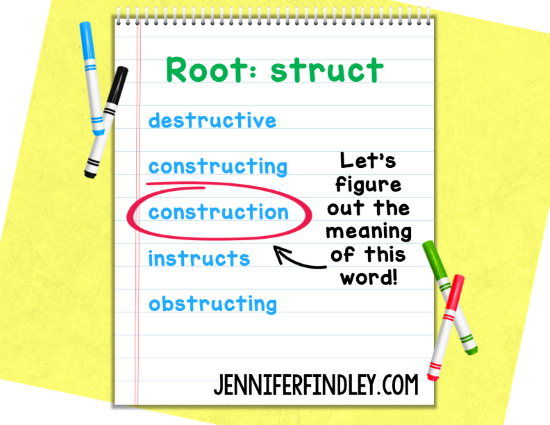
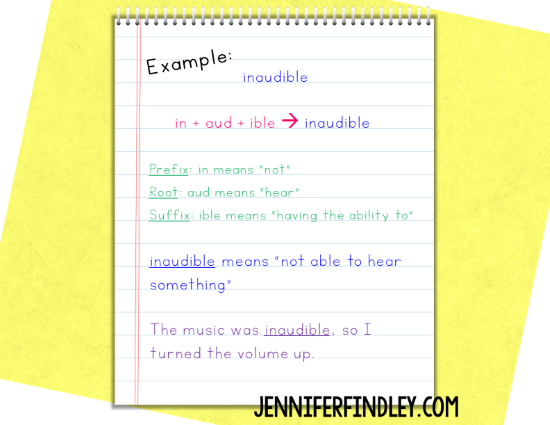
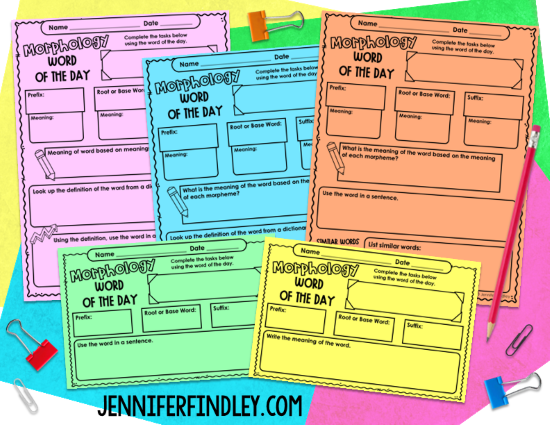
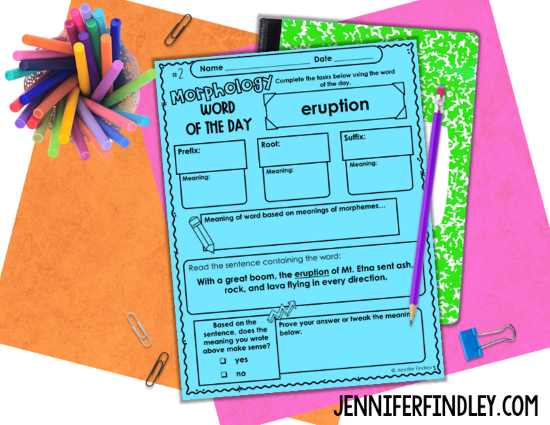
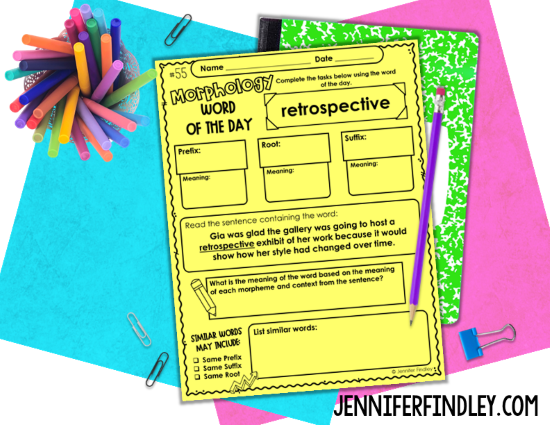
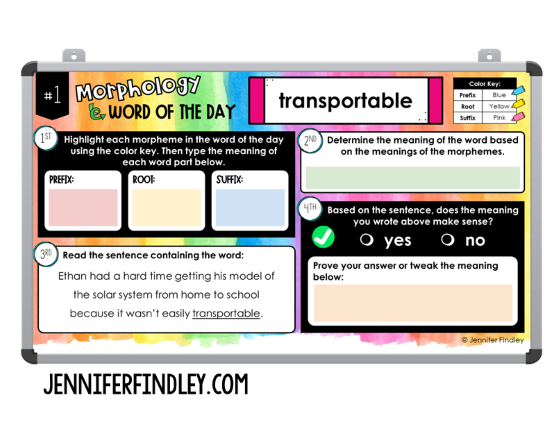
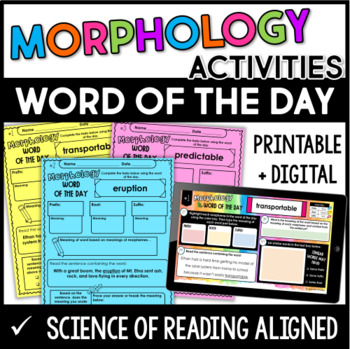







Hi – I lOVE your morphology posters! My district is using OCR and many of our units focus on prefix, suffix and roots. Do you have a blank template? OCR has a few that are not included in your posters and I would love to be able to add to them and keep it cohesive.
Thank you so much for all of your resources! They are invaluable!!!
Hey! Can you email me at jen @ jennifer findley.com (no spaces) and let me know which ones you would like included?